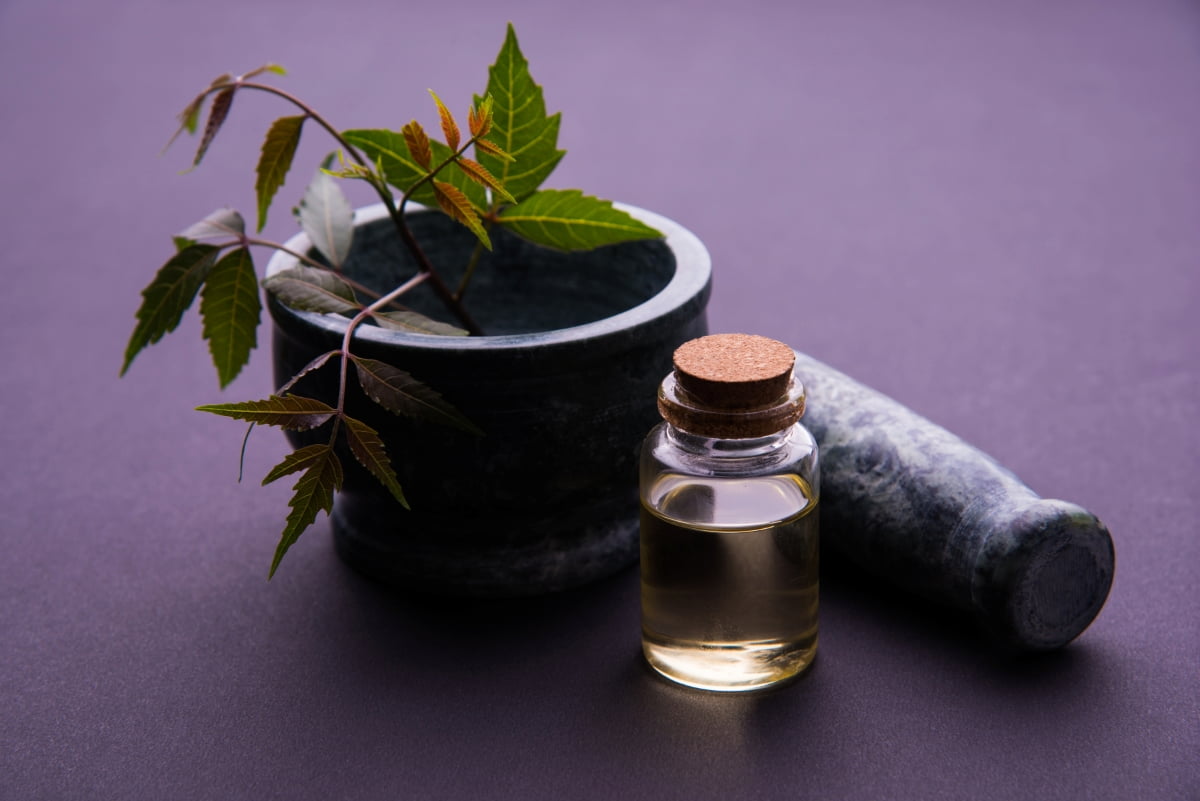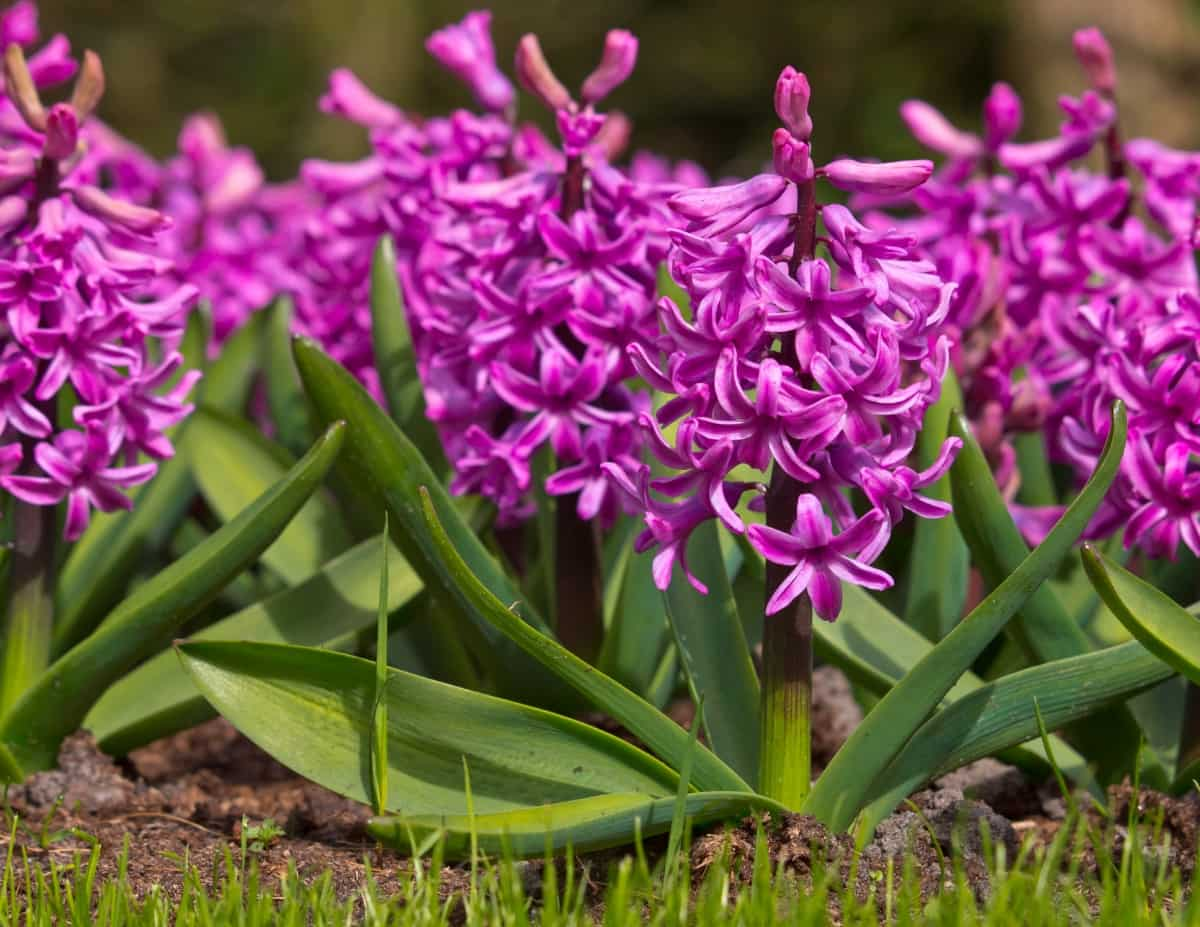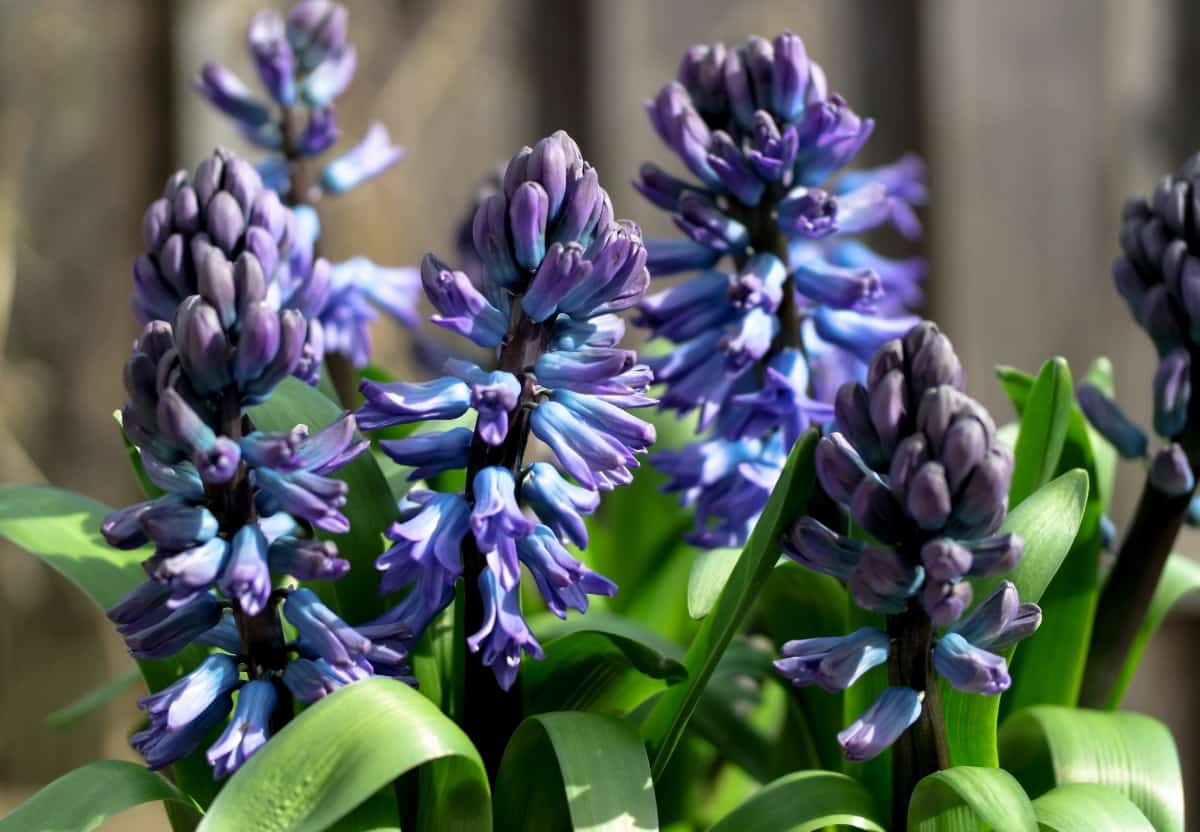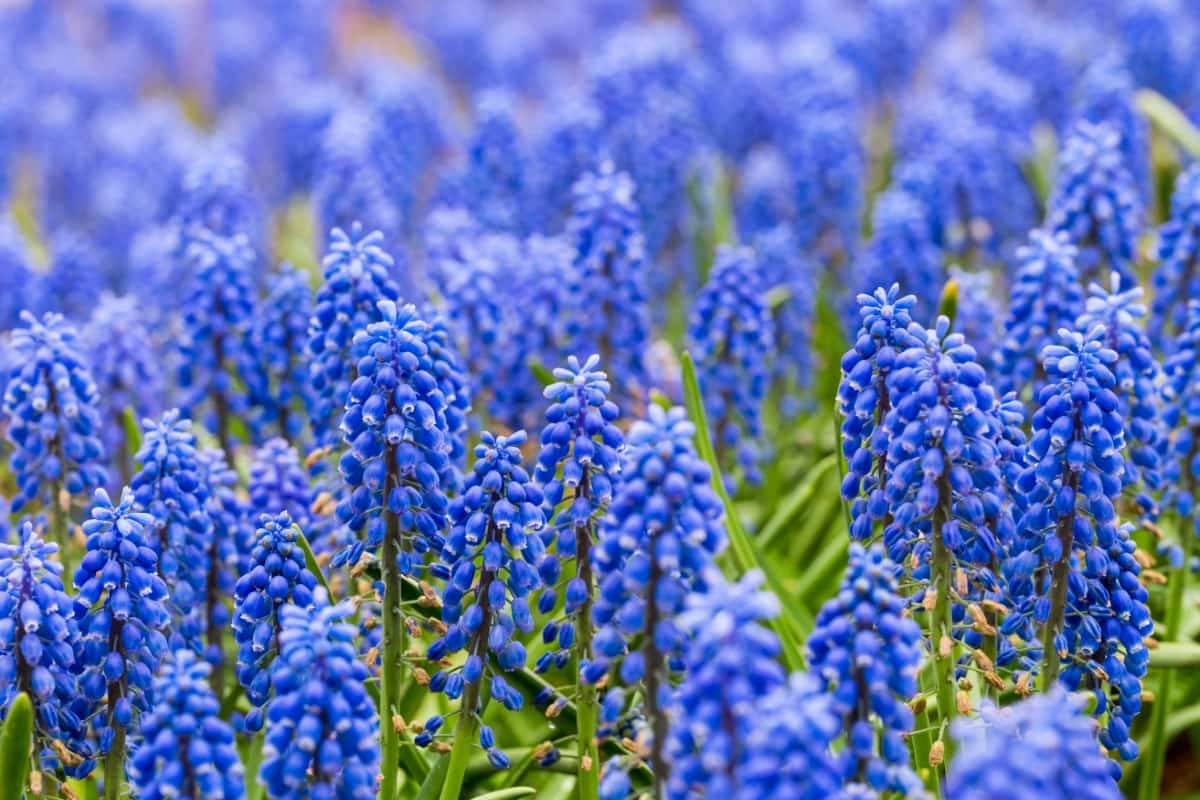Neem oil, a natural and effective remedy, has gained popularity for safeguarding hyacinth plants against a variety of pests and diseases. This article looks at how neem oil can help your garden grow better and have more colorful flowers.

How to Use Neem Oil on Hyacinth Plants
Neem Oil and its Benefits for Hyacinth Plants
Neem oil, a natural pesticide extracted from the neem tree, is increasingly popular among gardeners, especially for treating hyacinth plants. This oil is liked because it can fight pests well without hurting helpful bugs. When used on hyacinth plants, neem oil can control common bugs like aphids, mites, and whiteflies, which are often attracted to these flowers.
Its systemic action not only tackles pests on the surface but also those hidden within the plant. Moreover, neem oil acts as a foliar feed, providing additional nutrients to the hyacinth. It’s important to note, however, that while neem oil is generally safe for hyacinths, some plants do not use neem oil due to their sensitivity.
How to Prepare Neem Oil to Use on Hyacinth Plants
To effectively use neem oil on plants, it’s crucial to prepare the mixture correctly. To mix neem oil for plants, start by purchasing pure, cold-pressed neem oil. Next, make a solution by mixing 2 teaspoons of neem oil with 1 liter of water and a few drops of gentle liquid soap. The soap helps the oil mix well with the water. When preparing neem oil for indoor plants or those in delicate stages of growth, it’s advisable to reduce the concentration slightly to avoid potential leaf burn. This solution should be used immediately after preparation to ensure its efficacy, as neem oil breaks down in water over time.
How to Apply Neem Oil on Hyacinth Plants
When applying neem oil on hyacinth plants, both foliar application and soil drench methods can be effective. To apply neem oil to the soil, gently pour the prepared solution around the base of the plant, allowing it to seep into the soil. This method works well for soil pests and can prevent problems like root rot.
For foliar application, use a spray bottle to evenly coat the hyacinth leaves, focusing on both the upper and lower surfaces. This is especially beneficial for targeting pests like gnats and spider mites. It’s best to apply neem oil during cooler parts of the day or in the evening to avoid leaf burn and ensure maximum absorption.
Mixing and Dilution for the Right Concentration of Neem Oil for Hyacinth Plants
Achieving the right concentration of neem oil is crucial for its effectiveness and safety in hyacinth plants. Typically, a 2% solution is recommended, which translates to about 2 teaspoons of neem oil per liter of water. The amount used may change based on how bad the pests are and how easily the plant gets harmed. For young or indoor hyacinth plants, a milder solution is preferable. Don’t forget to put some gentle liquid soap drops to mix the oil well. Stir it well before using it to make sure the oil spreads evenly in the water.
In case you missed it: How to Use Neem Oil on Peonies: Best Natural Way to Get Rid of Pests on Peonies

Can Neem Oil Be Used on All Hyacinth Plant Varieties?
Neem oil is usually okay to use on most types of hyacinth plants. However, some plants may be more sensitive to oil-based treatments. Before broadly applying neem oil, it’s wise to test it on a small area of the plant and observe for any adverse reactions over 24 hours. If your plant looks sick with yellow or droopy leaves, it’s best not to use neem oil. It’s also crucial to consider the specific needs and conditions of each hyacinth variety, as some may require more or less frequent applications.
How Long Does Neem Oil Stay Effective on Hyacinth Plants?
After application, neem oil generally remains effective on hyacinth plants for about one to two weeks. Factors like weather conditions and the severity of the pest infestation influence its longevity. In rainy or very hot climates, the oil may break down more quickly, necessitating more frequent applications. It’s important to monitor the plants regularly and reapply the oil as needed to maintain effective pest control. Over time, regular use of neem oil can significantly reduce pest populations and improve the overall health of hyacinth plants.
Using Neem Oil in Combination with Other Pest Control Methods
While neem oil is a potent natural pesticide, using it in combination with other pest control methods can enhance its effectiveness. For instance, introducing beneficial insects like ladybugs can help control aphid populations, while regular pruning can remove heavily infested areas and improve air circulation.
In case you missed it: How to Use Neem Oil on Frangipani Plants: Best Natural Way to Get Rid of Pests

Physical barriers, such as garden netting, can also be useful in preventing pests from reaching the hyacinths. When combining different methods, it’s important to ensure they are compatible and won’t counteract each other’s effects. A holistic approach to pest management can lead to a healthier, more vibrant hyacinth garden.
Some Common Pests and Diseases that Neem Oil Can Control on Hyacinth Plants
Neem oil is highly effective against a range of common pests and diseases that afflict hyacinth plants. It’s great for stopping aphids, which are small pests that suck plant sap, making the leaves curl and get weaker. Spider mites, another common nuisance, are also susceptible to neem oil treatments; these mites cause discoloration and speckling on leaves.
Whiteflies, which cluster on the undersides of leaves, can be eradicated with neem oil, preventing them from weakening the plant. Apart from these insects, neem oil is also beneficial in controlling fungal diseases such as powdery mildew and rust, which often appear as unsightly spots on the leaves and stems of hyacinths.
How to Monitor the Effectiveness of Neem Oil on Hyacinth Plants
Monitoring the effectiveness of neem oil on hyacinth plants is key to understanding its impact and adjusting treatments accordingly. After applying neem oil, check the plants after 24-48 hours to observe any immediate effects, such as a reduction in pest activity or the disappearance of fungal spots.
Continue to inspect the plants regularly, ideally every few days, to gauge the longer-term efficacy. Look for signs of new growth, healthier leaves, and a decrease in pest infestations. It’s also important to monitor for any adverse reactions, like leaf burn or wilting, which may indicate a need to adjust the concentration of neem oil. Keeping a record of each application, including the date, concentration used, and observations, can be helpful in fine-tuning future treatments and achieving optimal results.
Safety Precautions to Take when Using Neem Oil on Hyacinth Plants
Always wear protective gloves when handling neem oil, as prolonged skin contact can irritate some individuals. It’s advisable to wear protective eyewear to prevent accidental splashes into the eyes. When spraying neem oil, especially on windy days, ensure you are positioned so that the spray does not drift onto your face or body. Keep children and pets away from the treated area until the neem oil has dried completely.
In case you missed it: How to Use Neem Oil on Jasmine Plants: Best Natural Way to Get Rid of Pests on Jasmine Plants

Additionally, it’s important to store neem oil and its mixture out of reach of children and pets. Properly disposing of any unused neem oil mixture is also crucial, as it can harm the environment if not discarded correctly. By taking these precautions, you can use neem oil safely and effectively to protect your hyacinth plants.
Conclusion
By understanding its proper preparation, application, and safety measures, gardeners can enjoy flourishing hyacinths with minimal environmental impact.
- Feed Your Flock for Less: Top 10 Tips to Save on Chicken Feed
- Ultimate Guide to Ossabaw Island Hog: Breeding, Raising, Diet, and Care
- Hatching Answers: The Top 10 Reasons Your Chickens Aren’t Laying Eggs
- Eggs and Economics: Breaking Down the Cost of Raising Backyard Chickens
- Defend Your Greens: Proven Methods to Keep Iguanas Out of Your Garden
- Ultimate Guide to Cinnamon Queen Chicken: A Comprehensive Guide for Beginners
- Ultimate Guide to California Tan Chicken: Breeding, Raising, Diet, Egg-Production and Care
- Ultimate Guide to Marsh Daisy Chicken: Breeding, Raising, Diet, and Care
- 10 Types of Chicken Farming Businesses You Can Start for Profits